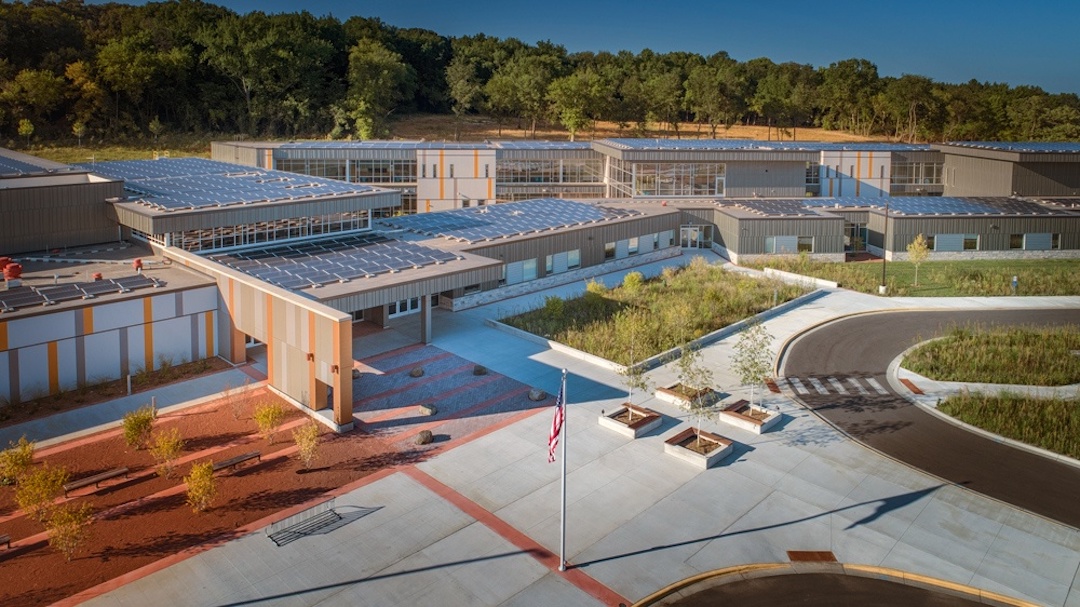Forest Edge Elementary School in Fitchburg, Wis., has become the largest net zero verified education project in the United States. The 126,600-sf project features 1,700 solar panels, 90 geothermal wells, and an energy-maximizing design.
The solar panels are on the building’s roof and, after one year in operation, the panels have provided all the power the school needs to operate. The rooftop solar panels produce 646 kW of energy in one year and offset CO2 emissions equivalent to 623,249 pounds of coal burned. In addition to being energy-efficient, the school’s design connects students to the natural environment and leverages its unique features as a teaching tool.
Bray Architects, the architect for the project, teamed with HGA and J.H. Findorff & Son to complete the project.
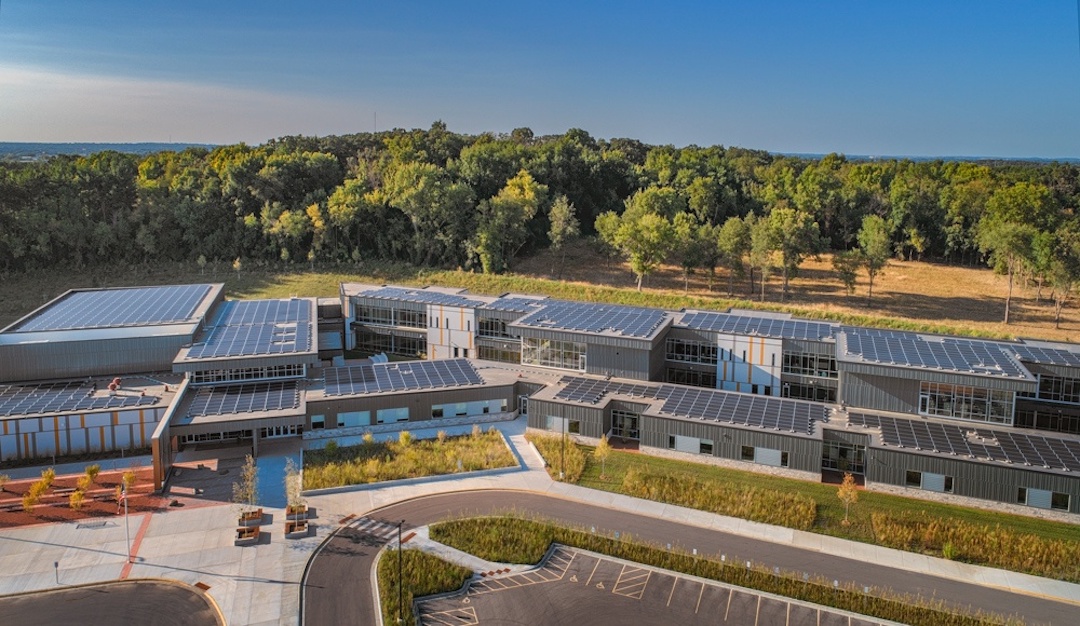
Each section of the school is themed to highlight natural energy sources: Life, Light, Thermal, and Wind. Viewing areas in the building offer views of the solar panels, vegetated roofs, and geothermal pumps. The library is designed as a “nest” that faces toward the forest adjacent to the school, immersing the students in nature while indoors.
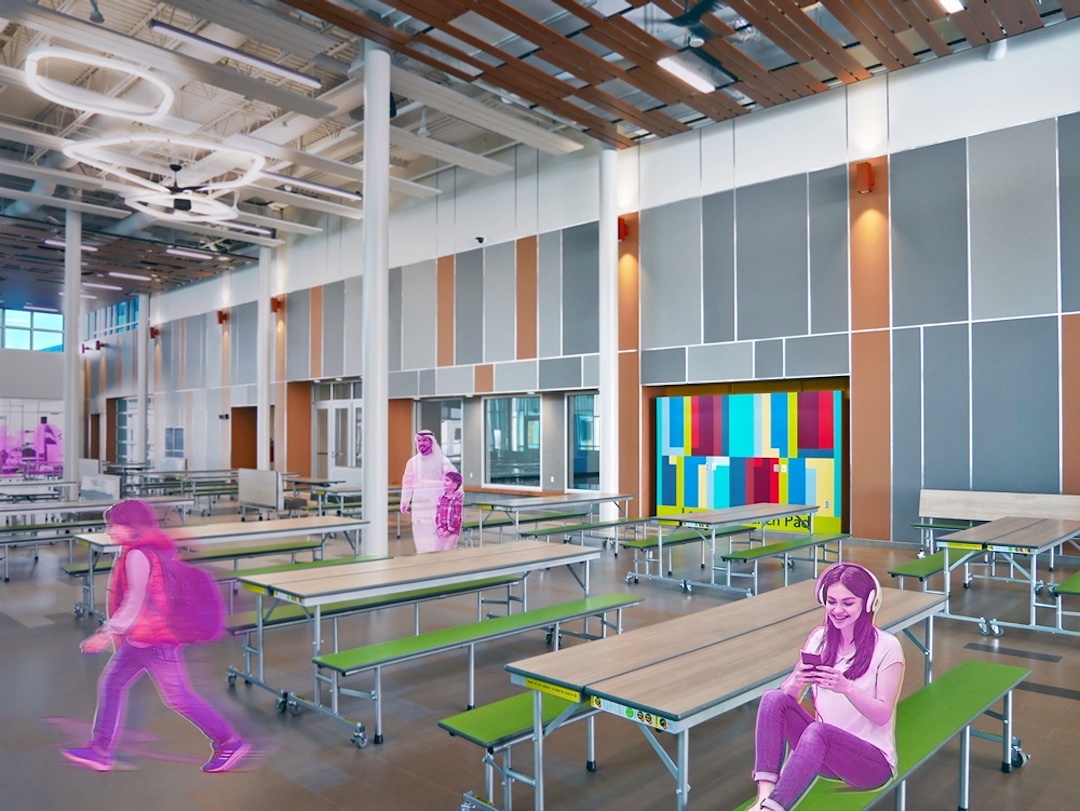
According to New Buildings Institute data, as of Oct 1, Forest Edge is:
- The largest verified net zero education facility in the U.S.
- The first net zero verified elementary school in the Midwest/Great Plains region
- The first net zero school in Wisconsin
- One of only 74 net zero verified public projects in the U.S.
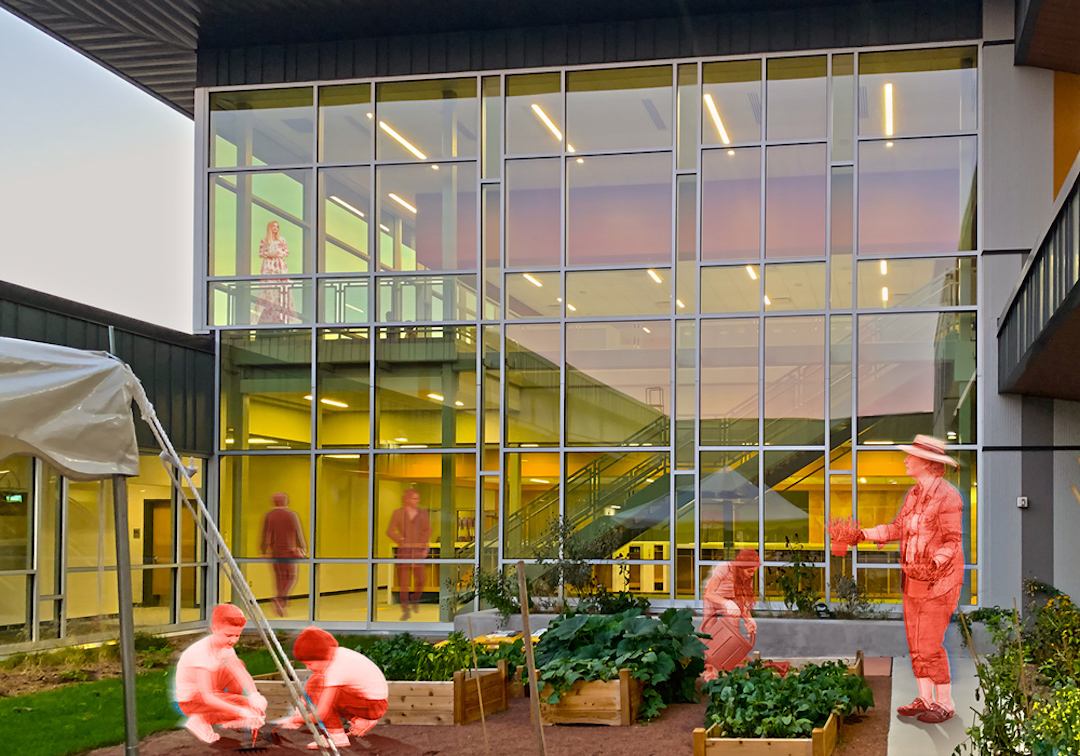
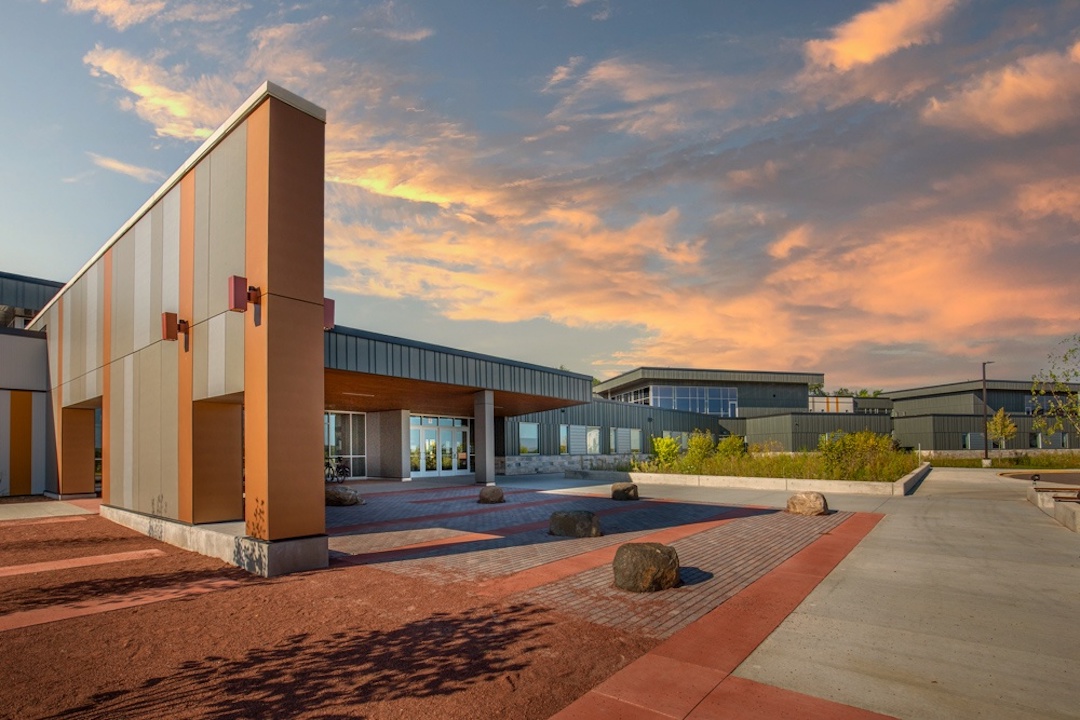
Related Stories
| May 30, 2018
Accelerate Live! talk: From micro schools to tiny houses: What’s driving the downsizing economy?
In this 15-minute talk at BD+C’s Accelerate Live! conference (May 10, 2018, Chicago), micro-buildings design expert Aeron Hodges, AIA, explores the key drivers of the micro-buildings movement, and how the trend is spreading into a wide variety of building typologies.
| May 24, 2018
Accelerate Live! talk: Security and the built environment: Insights from an embassy designer
In this 15-minute talk at BD+C’s Accelerate Live! conference (May 10, 2018, Chicago), embassy designer Tom Jacobs explores ways that provide the needed protection while keeping intact the representational and inspirational qualities of a design.
K-12 Schools | Jan 25, 2018
Cost estimating for K-12 school projects: An invaluable tool for budget management
Clients want to be able to track costs at every stage of a project, and cost estimates (current and life cycle) are valuable planning and design tools, writes LS3P's Ginny Magrath, AIA.
K-12 Schools | Jan 24, 2018
Hawaii’s first net-zero public school
G70 is the architect, planner, and civil engineer of record for the project.
K-12 Schools | Jan 22, 2018
Innovative learning environments and our ‘Heschong Mahone moment’
An education market think tank proposes a radical research concept for evaluating learning environments.
K-12 Schools | Dec 6, 2017
Designing K-12 schools from the inside out
A step-by-step process finds better answers, saves money, and produces measurable results.
K-12 Schools | Nov 16, 2017
Future-proofing higher education: Understanding generation Z
There are three driving issues behind this next generation: demographic change, behavioral change, and the power to choose.
Engineers | Nov 2, 2017
CannonDesign expands its presence in Colorado with BWG acquisition
Future mergers could be in the offing.
K-12 Schools | Oct 31, 2017
Exploring empathy in architecture: Put yourself in your student’s shoes
People are enigmatic and inherently complex, which can make it difficult to design for a larger population.
K-12 Schools | Oct 28, 2017
A new elementary school in Cambridge, Mass., aims at being a pilot for that city’s NZE commitment
The building’s programming will provide more access to the community at large.


